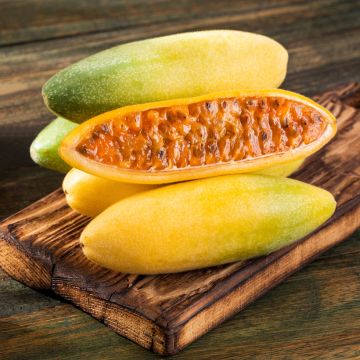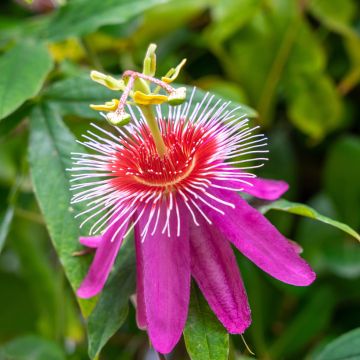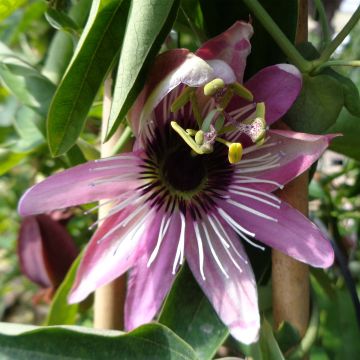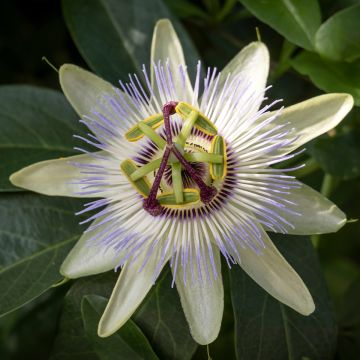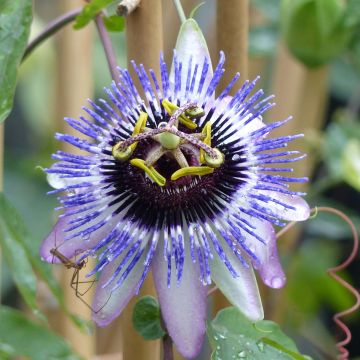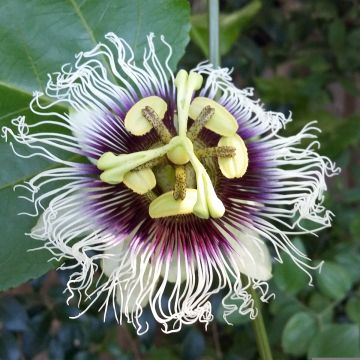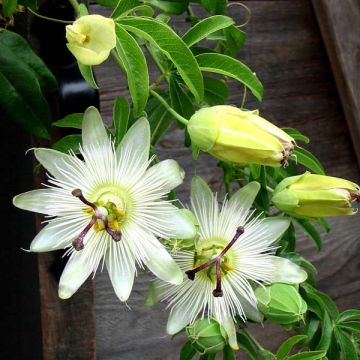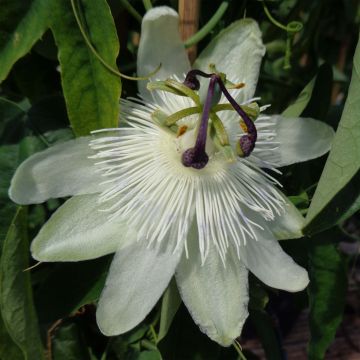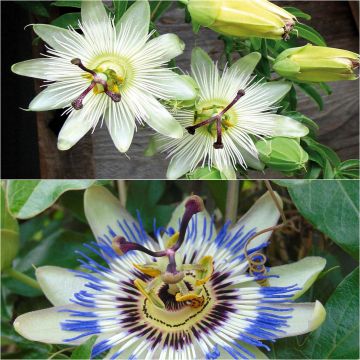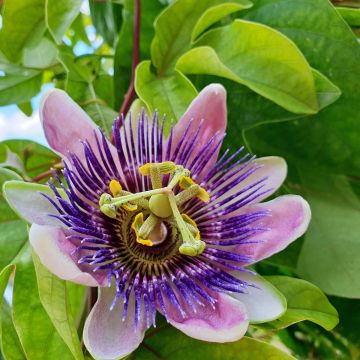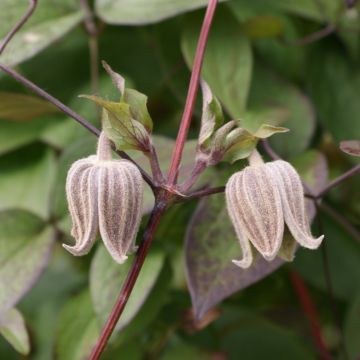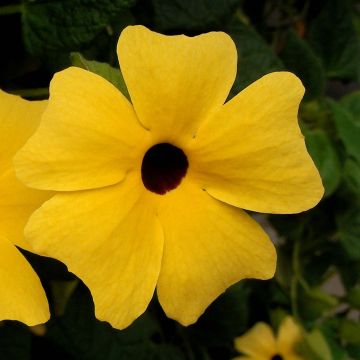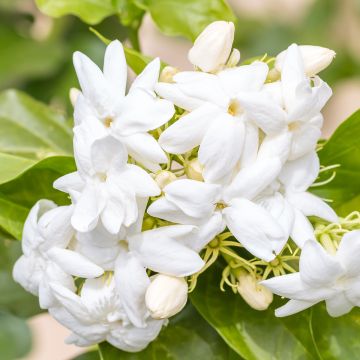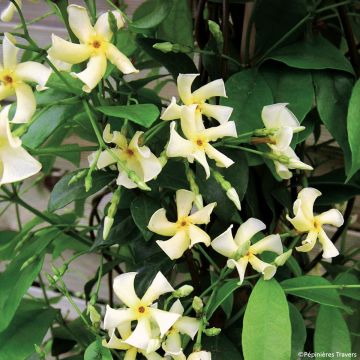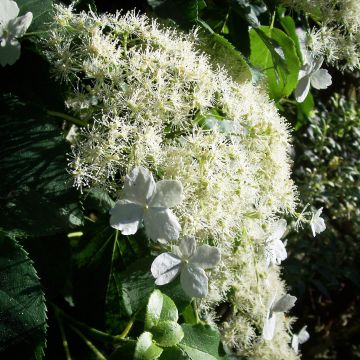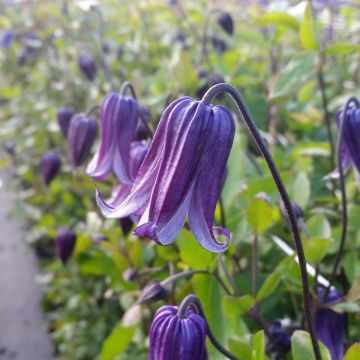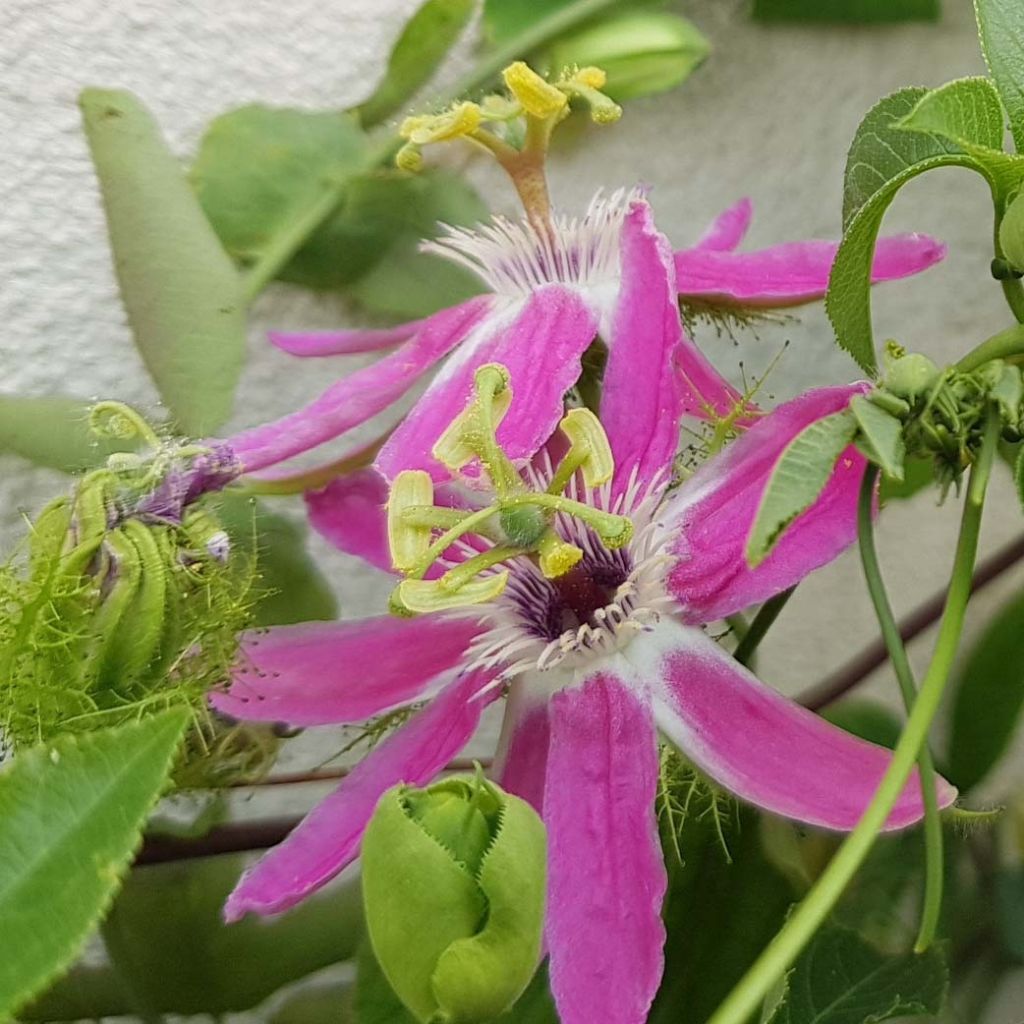

Passiflora Aurora - Passion Flower
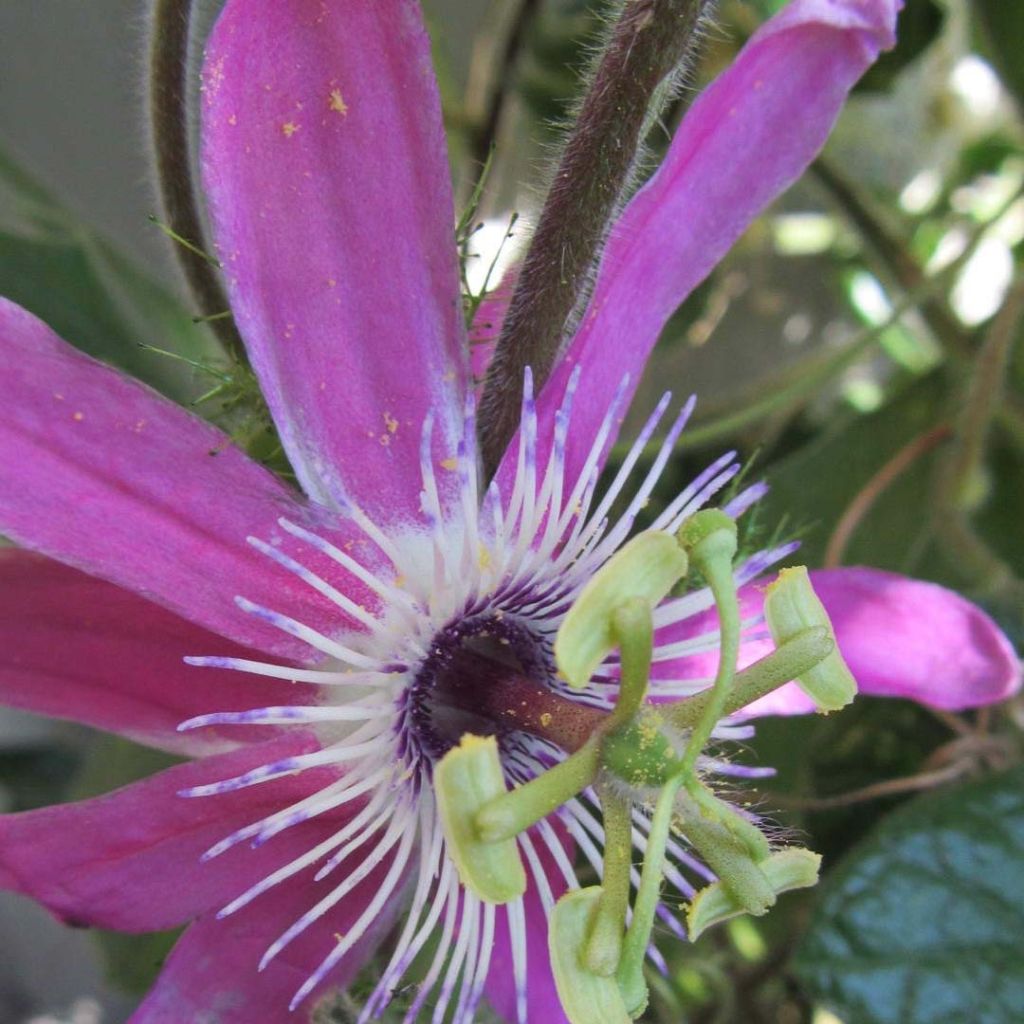

Passiflora Aurora - Passion Flower
Passiflora Aurora - Passion Flower
Passiflora foetida x sublanceolata Aurora
Passion Flower, Passion Vine
Why not try an alternative variety in stock?
View all →This plant carries a 6 months recovery warranty
More information
We guarantee the quality of our plants for a full growing cycle, and will replace at our expense any plant that fails to recover under normal climatic and planting conditions.
From €5.90 for pickup delivery and €6.90 for home delivery
Express home delivery from €8.90.
Does this plant fit my garden?
Set up your Plantfit profile →
Description
The Passiflora 'Aurora' results from the passionate work of Italian breeder and passionflower collector Maurizio Vecchia. This fairly recent and rare hybrid variety offers flowers in a bright pink colour, like the sky at dawn, and blooms early in the morning, hence its name. It forms a climber that reaches only 2 to 3 metres (7 to 10 feet), making it suitable for pot cultivation on a terrace, under a veranda, or in the ground wherever temperatures do not drop below -8°C (17.6°F).
Mostly native to tropical areas of South America, passionflowers belong to the large family of Passifloraceae, which includes 400 species and numerous spontaneous or horticultural hybrids.
'Aurora' is a robust and vigorous plant that tolerates hot summers. Rambling, it clings to its support using tendrils, reaching a height of 2 to 3 metres (7 to 10 feet). It is characterized by its slender stems adorned with leaves divided into 3 pointed lobes of a shiny dark green colour. Its flowering lasts from late spring to autumn, with large flowers measuring about 8 cm (3in) in diameter that constantly renew on the plant. These flowers are composed of bright pink petals and sepals of the same colour, ending in a short spur at their tip. The central crown comprises short white filaments (2 cm (1in)), dark purple at their base and light purple at the tip. Green stamens occupy the centre. The shape of the flower evolves: petals and sepals curl, while the crown of filaments folds and then straightens, to avoid self-pollination. Once pollinated, the flowers give way to a few rare inedible fruits, oval in shape, bright red when ripe, measuring 3.5 cm (1in) in length and 2.5 cm (1in) in width.
This hardy passionflower, able to withstand temperatures as low as -8°C (17.6°F), grows in well-drained, light, fairly deep and not too dry soil, in a sunny and sheltered location. At the end of flowering, pruning consists of reducing the branches to maintain an attractive habit. It thrives in all southern and Atlantic regions. With its height of 2 to 3 metres (7 to 10 feet) and generous exotic flowering, the 'Aurora' passionflower is a wonderful plant for dressing walls, fences, trellises, and porches. It is also ideal for conservatories where it will safely survive cold winters.
Report an error about the product description
Passiflora Aurora - Passion Flower in pictures
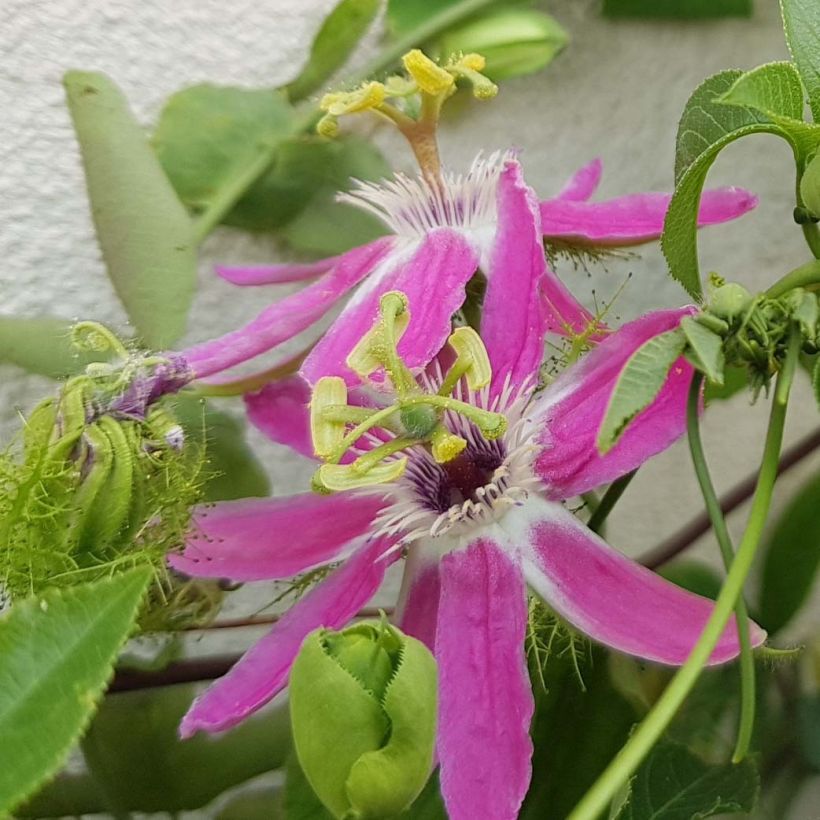

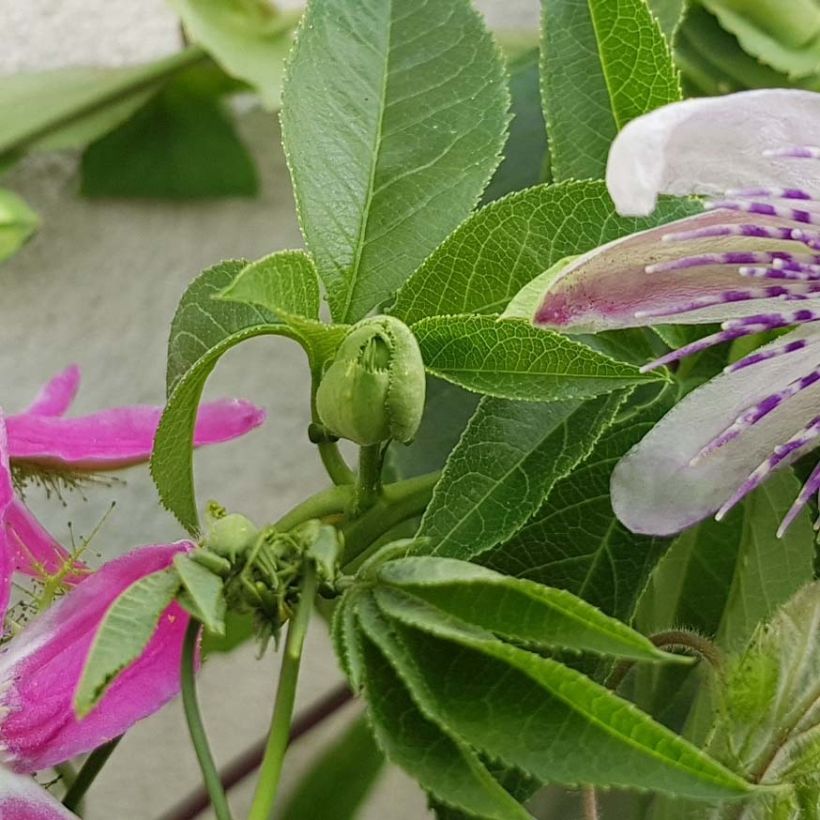

Plant habit
Flowering
Foliage
Botanical data
Passiflora
foetida x sublanceolata
Aurora
Passifloraceae
Passion Flower, Passion Vine
Cultivar or hybrid
Other Passionflowers
Planting and care
The 'Aurora' passionflower is a sun-loving and heat-loving plant that should be sheltered from cold and drying winds. Plant it in ordinary but deep, well-worked, well-amended, and well-drained soil. Hardy down to 8°C (46.4°F), it is suitable for container cultivation. Place it on a support to support the weight of the vegetation. Direct its branches well on the support as the growth is exuberant. Pruning before wintering is recommended to maintain a reasonable size. Do not hesitate to cut back the main branches to facilitate growth. Remove dead or misplaced branches and prune excess branches to improve air circulation. Beware of scale insects and whiteflies, as well as the cucumber mosaic virus. Treat preventively.
Planting period
Intended location
Care
This item has not been reviewed yet - be the first to leave a review about it.
Summer flowering climbers
Haven't found what you were looking for?
Hardiness is the lowest winter temperature a plant can endure without suffering serious damage or even dying. However, hardiness is affected by location (a sheltered area, such as a patio), protection (winter cover) and soil type (hardiness is improved by well-drained soil).

Photo Sharing Terms & Conditions
In order to encourage gardeners to interact and share their experiences, Promesse de fleurs offers various media enabling content to be uploaded onto its Site - in particular via the ‘Photo sharing’ module.
The User agrees to refrain from:
- Posting any content that is illegal, prejudicial, insulting, racist, inciteful to hatred, revisionist, contrary to public decency, that infringes on privacy or on the privacy rights of third parties, in particular the publicity rights of persons and goods, intellectual property rights, or the right to privacy.
- Submitting content on behalf of a third party;
- Impersonate the identity of a third party and/or publish any personal information about a third party;
In general, the User undertakes to refrain from any unethical behaviour.
All Content (in particular text, comments, files, images, photos, videos, creative works, etc.), which may be subject to property or intellectual property rights, image or other private rights, shall remain the property of the User, subject to the limited rights granted by the terms of the licence granted by Promesse de fleurs as stated below. Users are at liberty to publish or not to publish such Content on the Site, notably via the ‘Photo Sharing’ facility, and accept that this Content shall be made public and freely accessible, notably on the Internet.
Users further acknowledge, undertake to have ,and guarantee that they hold all necessary rights and permissions to publish such material on the Site, in particular with regard to the legislation in force pertaining to any privacy, property, intellectual property, image, or contractual rights, or rights of any other nature. By publishing such Content on the Site, Users acknowledge accepting full liability as publishers of the Content within the meaning of the law, and grant Promesse de fleurs, free of charge, an inclusive, worldwide licence for the said Content for the entire duration of its publication, including all reproduction, representation, up/downloading, displaying, performing, transmission, and storage rights.
Users also grant permission for their name to be linked to the Content and accept that this link may not always be made available.
By engaging in posting material, Users consent to their Content becoming automatically accessible on the Internet, in particular on other sites and/or blogs and/or web pages of the Promesse de fleurs site, including in particular social pages and the Promesse de fleurs catalogue.
Users may secure the removal of entrusted content free of charge by issuing a simple request via our contact form.
The flowering period indicated on our website applies to countries and regions located in USDA zone 8 (France, the United Kingdom, Ireland, the Netherlands, etc.)
It will vary according to where you live:
- In zones 9 to 10 (Italy, Spain, Greece, etc.), flowering will occur about 2 to 4 weeks earlier.
- In zones 6 to 7 (Germany, Poland, Slovenia, and lower mountainous regions), flowering will be delayed by 2 to 3 weeks.
- In zone 5 (Central Europe, Scandinavia), blooming will be delayed by 3 to 5 weeks.
In temperate climates, pruning of spring-flowering shrubs (forsythia, spireas, etc.) should be done just after flowering.
Pruning of summer-flowering shrubs (Indian Lilac, Perovskia, etc.) can be done in winter or spring.
In cold regions as well as with frost-sensitive plants, avoid pruning too early when severe frosts may still occur.
The planting period indicated on our website applies to countries and regions located in USDA zone 8 (France, United Kingdom, Ireland, Netherlands).
It will vary according to where you live:
- In Mediterranean zones (Marseille, Madrid, Milan, etc.), autumn and winter are the best planting periods.
- In continental zones (Strasbourg, Munich, Vienna, etc.), delay planting by 2 to 3 weeks in spring and bring it forward by 2 to 4 weeks in autumn.
- In mountainous regions (the Alps, Pyrenees, Carpathians, etc.), it is best to plant in late spring (May-June) or late summer (August-September).
The harvesting period indicated on our website applies to countries and regions in USDA zone 8 (France, England, Ireland, the Netherlands).
In colder areas (Scandinavia, Poland, Austria...) fruit and vegetable harvests are likely to be delayed by 3-4 weeks.
In warmer areas (Italy, Spain, Greece, etc.), harvesting will probably take place earlier, depending on weather conditions.
The sowing periods indicated on our website apply to countries and regions within USDA Zone 8 (France, UK, Ireland, Netherlands).
In colder areas (Scandinavia, Poland, Austria...), delay any outdoor sowing by 3-4 weeks, or sow under glass.
In warmer climes (Italy, Spain, Greece, etc.), bring outdoor sowing forward by a few weeks.


































